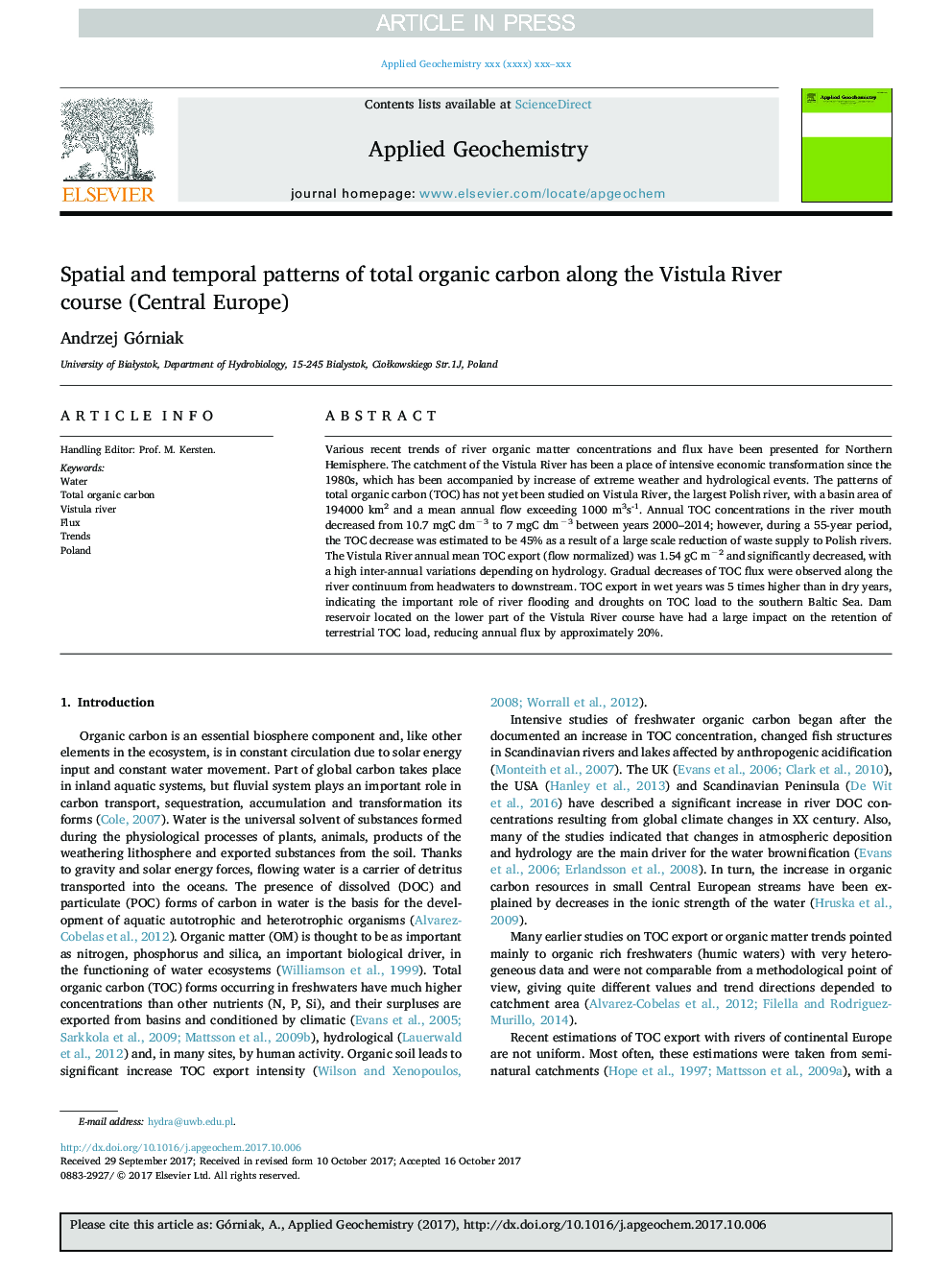| Article ID | Journal | Published Year | Pages | File Type |
|---|---|---|---|---|
| 8863269 | Applied Geochemistry | 2017 | 9 Pages |
Abstract
Various recent trends of river organic matter concentrations and flux have been presented for Northern Hemisphere. The catchment of the Vistula River has been a place of intensive economic transformation since the 1980s, which has been accompanied by increase of extreme weather and hydrological events. The patterns of total organic carbon (TOC) has not yet been studied on Vistula River, the largest Polish river, with a basin area of 194000Â km2 and a mean annual flow exceeding 1000 m3s-1. Annual TOC concentrations in the river mouth decreased from 10.7Â mgC dmâ3 to 7Â mgC dmâ3 between years 2000-2014; however, during a 55-year period, the TOC decrease was estimated to be 45% as a result of a large scale reduction of waste supply to Polish rivers. The Vistula River annual mean TOC export (flow normalized) was 1.54Â gC mâ2 and significantly decreased, with a high inter-annual variations depending on hydrology. Gradual decreases of TOC flux were observed along the river continuum from headwaters to downstream. TOC export in wet years was 5 times higher than in dry years, indicating the important role of river flooding and droughts on TOC load to the southern Baltic Sea. Dam reservoir located on the lower part of the Vistula River course have had a large impact on the retention of terrestrial TOC load, reducing annual flux by approximately 20%.
Related Topics
Physical Sciences and Engineering
Earth and Planetary Sciences
Geochemistry and Petrology
Authors
Andrzej Górniak,
